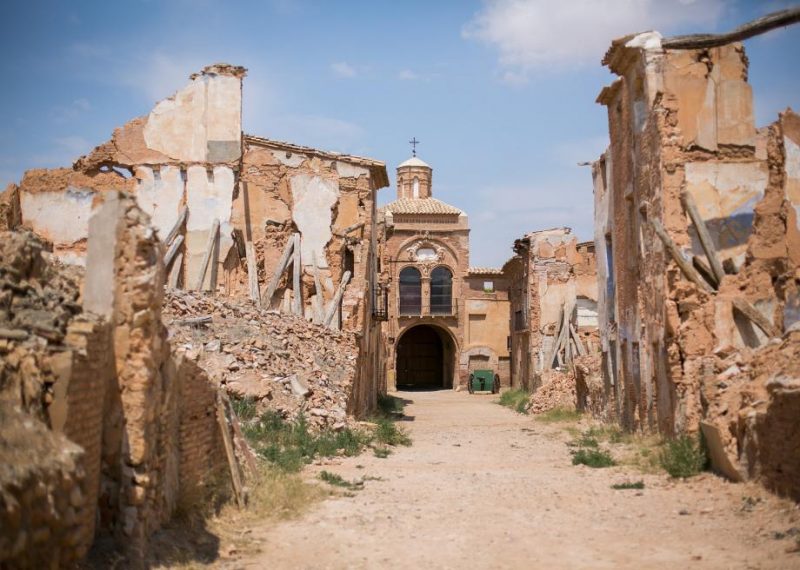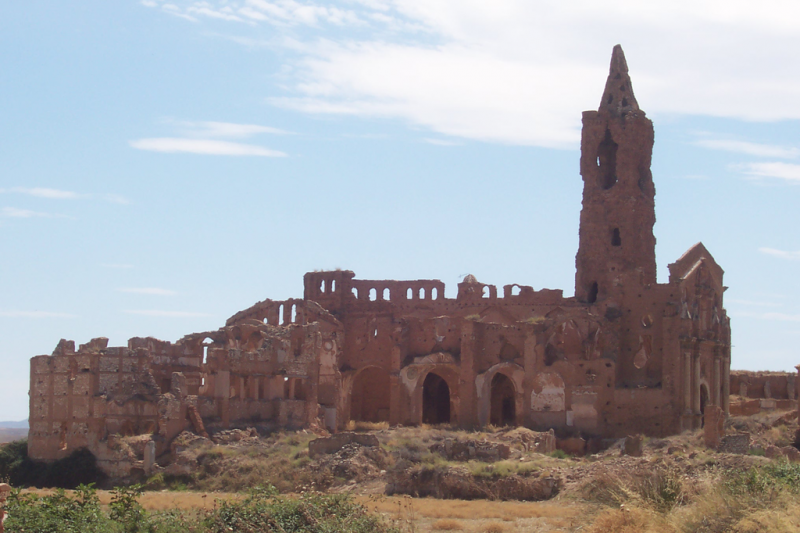Just recently, a photographer took pictures of a Spanish village which was destroyed nearly 80 years ago. Belchite fell victim of the Spanish Civil War, during which 3,000 were killed in the town. The devastated town has strangely remained unrepaired as a memorial for those who died there.
An odd thing about Belchite is that there are two towns with the same name in southern Spain. One of the villages is home to a little over 1,000 people and the other is the ghost town that was demolished during the war in 1939.
The battle at Belchite is known as one of the bloodiest battles during the Spanish Civil War. It only took two weeks for the whole village to be destroyed. This battle began when the loyalist Republicans were stationed in the village and began attacking General Franco’s Nationalists forces. The Republicans actually won that battle, but overall their side lost the war.
The Spanish Civil War was fought during the years of 1936 to 1939. It was fought between the Republicans, who showed their loyalty to the Second Spanish Republic, and the Nationalists who were led by General Francisco Franco. After all was said and done, the Nationalists ended up winning the war and managed to kill nearly half a million people in the process. This resulted in Franco ruling Spain for 36 years until he died in 1975.
In a feeble attempt to stop the Nationalist forces, the Northern provinces tried resisting against Franco’s movements. The Republicans launched counter attacks along the Nationalist front line in Aragon. However, those smaller villages were in no shape to fight since poor resources made it hard for them to defend themselves. Belchite happened to be one of these villages; the Republicans held the village throughout the counterattacks, which resulted in the two-week, bloody battle which all but leveled the town.

Even after the village had been reduced to rubble, several people still continued to live there. However, General Franco decided to send a message to the former Republicans by ordering that a new village would be built right next to the destroyed village. That is why there are now two Belchite villages. While this move seemed benevolent, Franco only ordered it so those in the new town would be forced to look at the rubble and remember the “irresistibility of the Nationalist forces.” While the Republicans actually won the battle at Belchite, Franco wanted to get the message across that the entire war eventually fell to the “superiority” of the Nationalists.
One of the photos taken is of the church, which was the scene of fierce fighting. Franco’s Nationalists were supported by the International Brigade – made up of volunteer foreign fighters. There was also the American Lincoln Battalion which was made up of about 3,500 fighters. However, the battalion was under sniper fire and was ordered to take the church. Out of the 22 men who fought the first assault, only two of them survived.

Another photo is of an Irish-American man named Bill Bailey who fought on the International Brigades against General Franco’s Nationalists. He recalls that he and a few other men took grenades and threw them into several houses. He said they did this hour after hour, watching houses fall from attic to cellar, until nothing was left.
A Scottish volunteer, Hugh Sloan, is pictured with several other men with machine guns behind a barrier of sacks. What he remembers is probably the most haunting thing he had ever done. He said that the main difference in this war is that the soldiers saw who they were killing. This was unlike other wars in which soldiers were most likely killing the enemy from a distance. Along with that, he said that the heat and decomposing bodies brought on the worst smell. Eventually, that is all he could smell. He couldn’t even walk down roads without seeing piles of bodies.
Ernest Hemingway was among the journalists who came to Belchite after the battle. He said that people were still pulling out corpses from the rubble. Between the humans and the animal corpses, he said that the town was no longer recognized as a town, but as just a smell.
